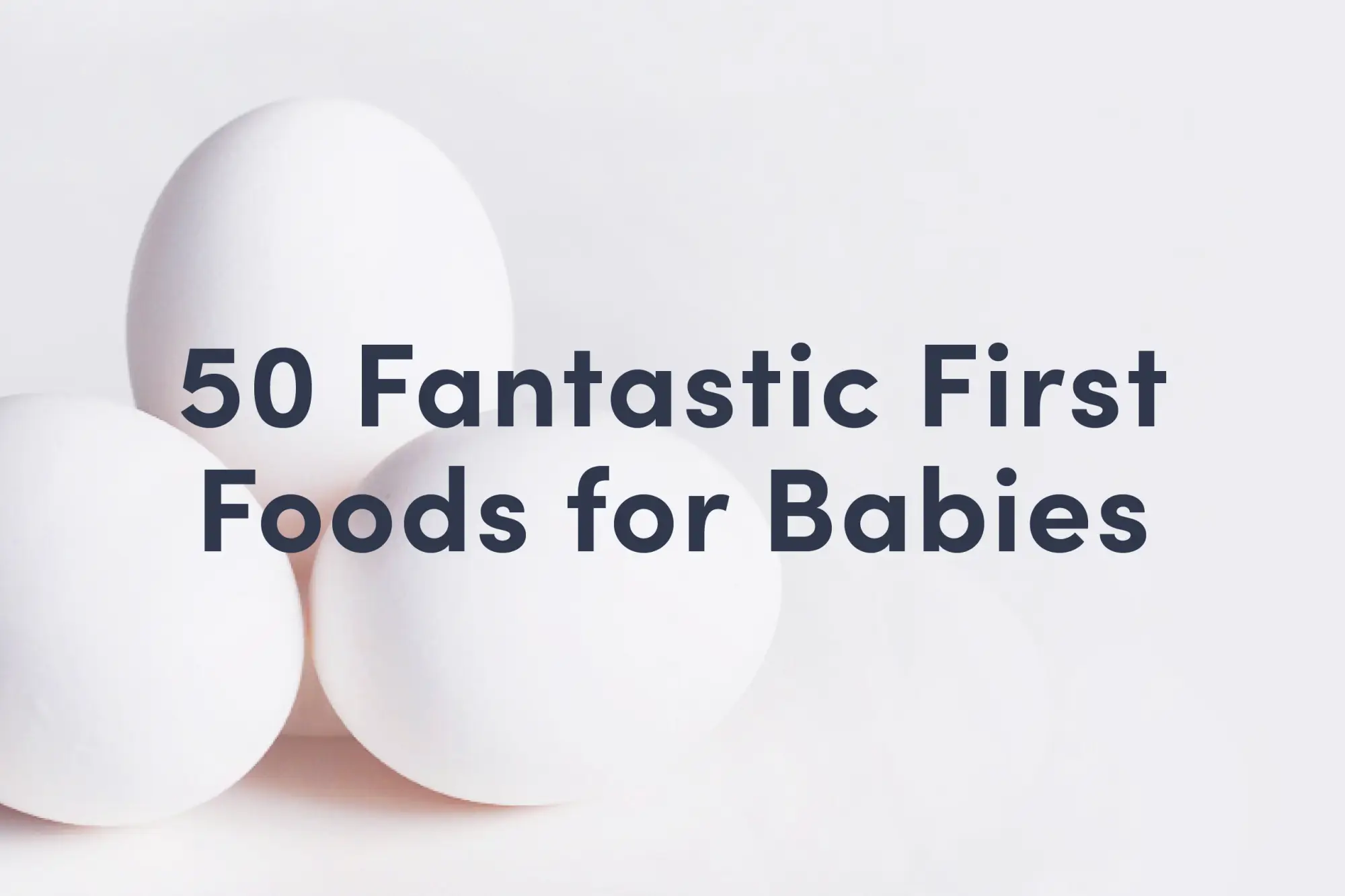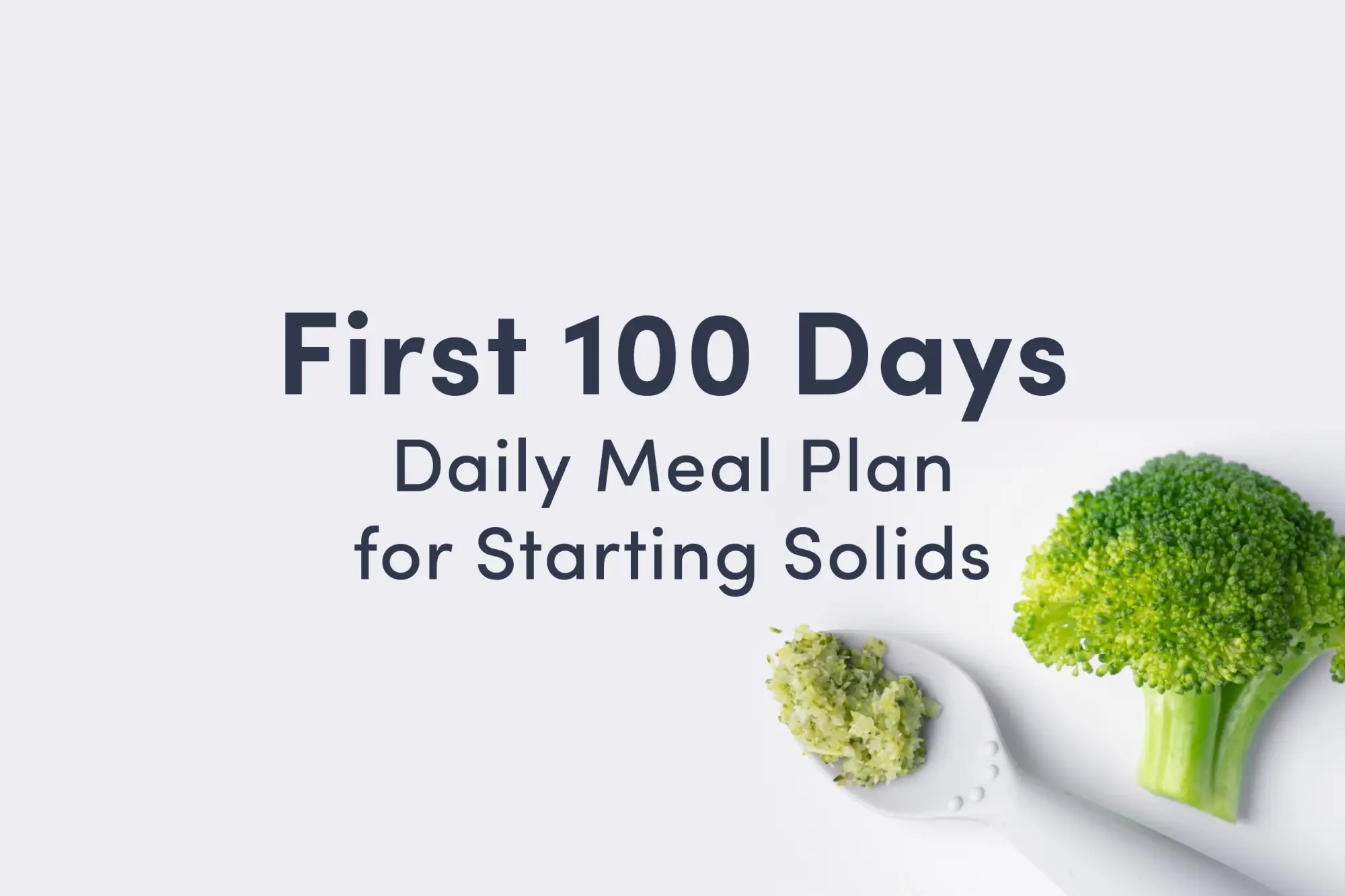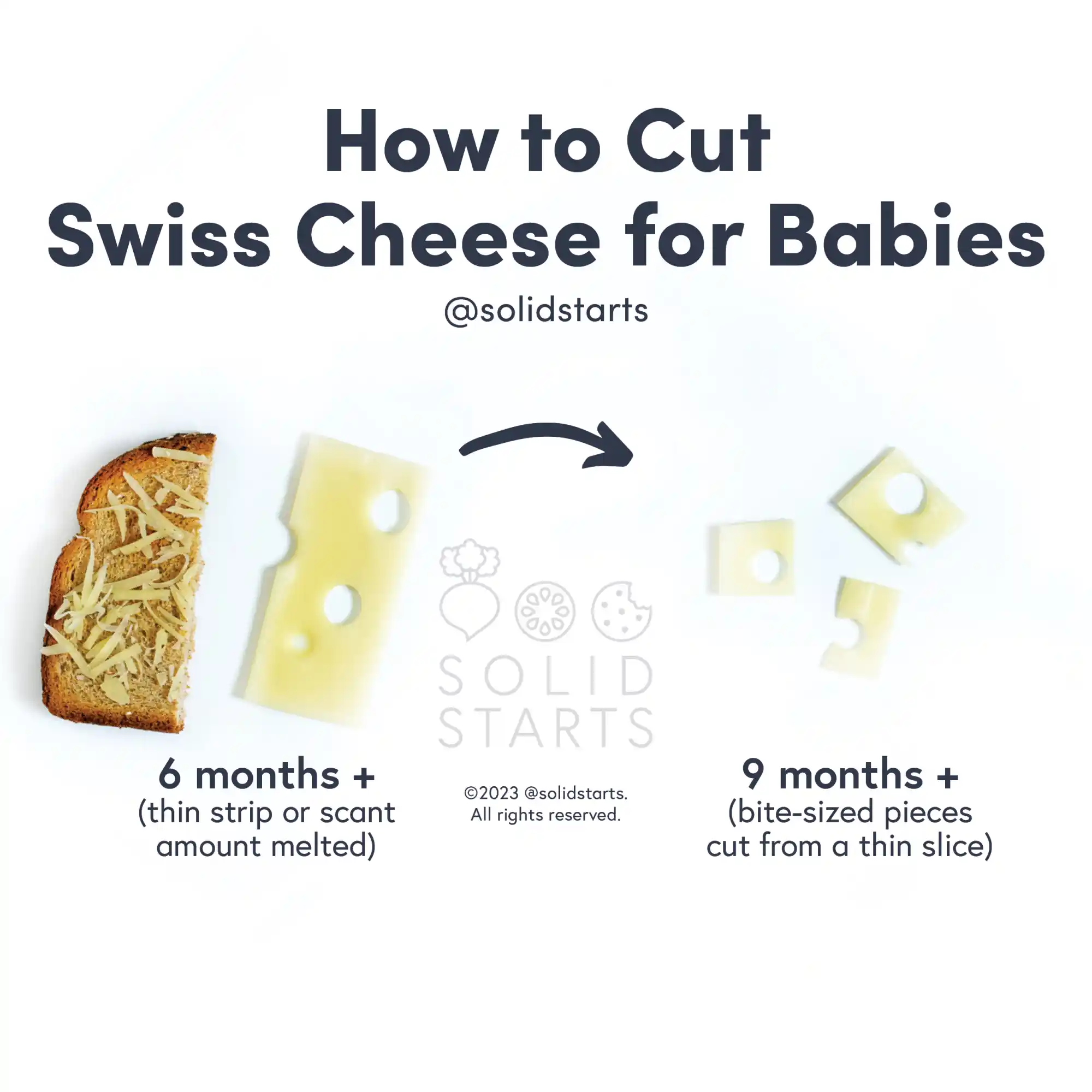Swiss Cheese
Dairy
Age Suggestion
6 months
Iron-Rich
No
Common Allergen
Yes
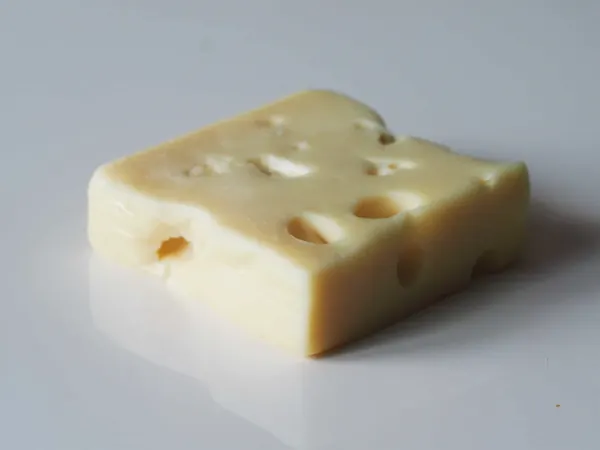
When can babies eat swiss cheese?
Swiss cheese may be introduced as soon as baby is ready to start solids, which is generally around 6 months of age.
Where does swiss cheese come from?
In the United States, “swiss cheese” often refers to any cheese with holes, though in Switzerland, this cheese is named after the alpine region from which it came, Emmental. Swiss cheese and emmentaler cheese are both firm and tend to contain less sodium than other cheeses, a characteristic that grew out of necessity as emmentaler was traditionally made in the Alps, where salt was in limited supply. These characteristics create the right conditions for helpful bacteria to thrive and produce carbon dioxide, which creates distinctive holes in the final product. Swiss immigrants brought their techniques to North America, and as the alpine cheese grew in popularity, it took the name of their nationality rather than the region in which it originated.
Videos
Is swiss cheese healthy for babies?
Yes. Swiss cheese is typically pasteurized and lower in sodium than many other cheeses. Swiss cheese is also rich in fats and protein, which support baby’s cell structure, energy levels, and brain development. Finally, swiss cheese is a great source of calcium, zinc, selenium, vitamin A, and vitamin B12. Together, these nutrients help support bone development, the immune and nervous systems, plus promote healthy eyes, skin, and hair.
★Tip: For vegetarian families, certain versions of swiss cheese contain animal-derived rennet, so read labels and look for cheeses made with plant-based rennet.
Is swiss cheese a common choking hazard for babies?
Yes. Cubes of cheese and globs of melted cheese are a choking hazard for babies and children. To reduce the risk, slice swiss cheese thinly and avoid serving cheese in cubes. As always, make sure you create a safe eating environment and stay within an arm’s reach of baby during meals. For more information on choking, visit our section on gagging and choking and familiarize yourself with the list of common choking hazards.
Is swiss cheese a common allergen?
Yes. Cheese is often made from cow’s milk, which is a common food allergen in young children, accounting for about one-fifth of all childhood food allergies in the United States. Keep in mind that dairy products from other ruminants such as sheep, goat, and buffalo may provoke similar allergic reactions to cow’s milk dairy products. If baby is allergic to dairy, know that it is an allergy that often disappears with time. Research shows that the majority of children with cow's milk allergy will outgrow it by age 6, and many babies with milder symptoms of milk protein allergy (which can show up as painless blood in stool) are able to successfully reintroduce cow's milk as early as their first birthday, with the guidance of their doctors.
Milk is a known cause of food protein-induced enterocolitis syndrome, also known as FPIES. FPIES is a delayed allergy to food protein which causes the sudden onset of repetitive vomiting and diarrhea to begin a few hours after ingestion. Left untreated, the reaction can result in significant dehydration. Thankfully, like other forms of milk allergy, FPIES that presents early in life is generally outgrown by the time the child has reached 3-5 years of age.
For those with older children who are lactose intolerant (keep in mind this is uncommon for infants and toddlers), some good news: compared with milk and certain other dairy products, many cheeses may be better tolerated by those with lactose intolerance, particularly aged cheeses, which have lower lactose content. Note that if a child is lactose-intolerant, it’s important to find calcium-rich foods to consume regularly to ensure a balanced diet and support bone health. Search for naturally low-lactose cheeses and dairy products labeled “lactose-free.”
If you suspect baby may be allergic to milk, consult an allergist before introducing dairy products like cheese. Based on baby’s risk factors and history, an allergist may recommend allergy testing, or may instead advise dairy introduction under medical supervision in the office. If the risk is low, you may be advised to go ahead and introduce dairy in the home setting. As with all common allergens, start by serving a small quantity on its own for the first few servings, and if there is no adverse reaction, gradually increase the quantity over future servings.
Can swiss cheese help babies poop?
No. In general, cheese is relatively high in fat and low in fiber, qualities that slow the processes of digestion and pooping. Significant consumption of cheese and milk can be a contributing factor in constipation. Note that pooping patterns can vary significantly from child to child. Be sure to talk to your pediatric healthcare provider if you have concerns about baby’s pooping and digestive function.
How do you prepare swiss cheese for babies with baby-led weaning?
Every baby develops on their own timeline, and the suggestions on how to cut or prepare particular foods are generalizations for a broad audience.
6 to 8 months old:
Cut swiss cheese into long, thin slices to reduce the choking risk and make it easier for baby to self-feed. If you want to use swiss cheese in melted form, opt for shredded swiss cheese and sprinkle sparingly, as large globs of melted cheese can be difficult for young babies to chew and manage in the mouth. Avoid offering any kind of cheese in cubes and large chunks.
9 to 11 months old:
At this age, babies develop the pincer grasp (where the thumb and forefinger meet), which enables them to pick up smaller pieces of food. When you see signs of this development, you can move down in size, either to grated swiss cheese or bite-sized pieces cut from a thin slice (continue to avoid cube shapes). Offer the cheese on its own, so baby can experience the flavor, or as part of a meal.
12 to 24 months old:
At this age you can move back up in size to long, thin slices so that the toddler can practice tearing and taking bites. Alternatively, you can continue to offer bite-sized pieces cut from a thin slice or shredded cheese. After 12 months of age, you can also melt the cheese over bread, tortillas, pasta, beans, or vegetables. Just make sure the cheese isn’t too hot, but also hasn’t cooled so much that it re-hardens or get clumpy.
24 months old and up:
Serve swiss cheese in thin slices or bite-sized pieces, as well as melted over bread, tortillas, pasta, beans, or vegetables. At this age, many toddlers may be ready to eat cubes of swiss cheese. Before serving cubes of swiss cheese, look for signs of mature eating skills, such as taking small bites with their teeth, moving food to the side of the mouth when chewing, chewing thoroughly before swallowing, and not stuffing food in their mouths.
Even when the child is exhibiting these skills, we recommend coaching the child. Only serve cheese cubes when a child is seated in an upright seat, actively engaged in mealtime, and not distracted. Demonstrate chewing a piece of cheese yourself by placing it in between your front teeth, biting down, moving the food to the side, and then chewing with your mouth open. Once you have chewed the cheese well, open your mouth to show the child how it’s broken down. Say “I moved it to my big strong teeth to chew it. It needs a lot of chewing.” Then, offer one cube of cheese for the child to eat. If they do not attempt to chew, hold off on attempting again for a few weeks. Remember, these skills take time, and it’s best to meet the individual child where they are at.
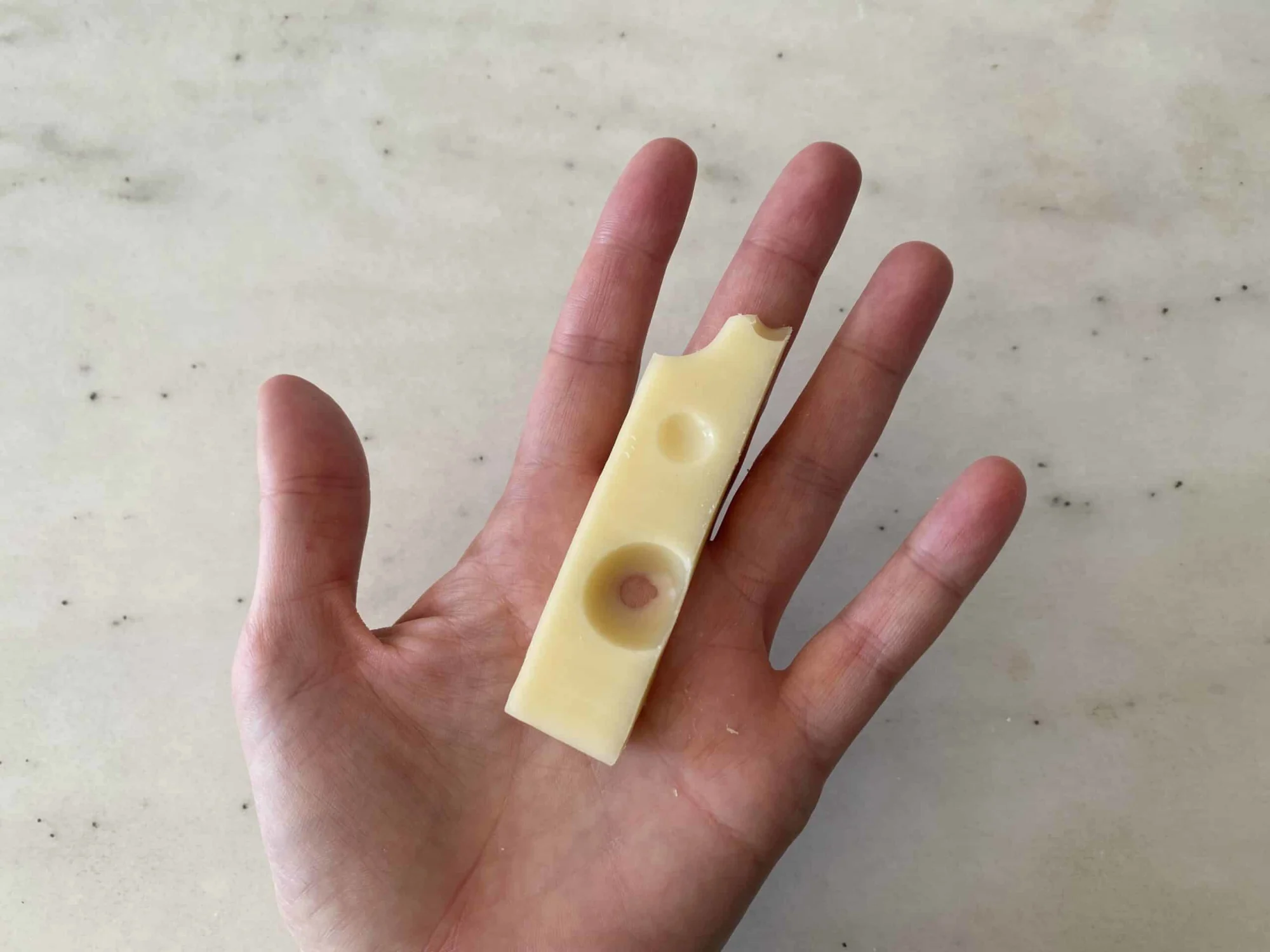
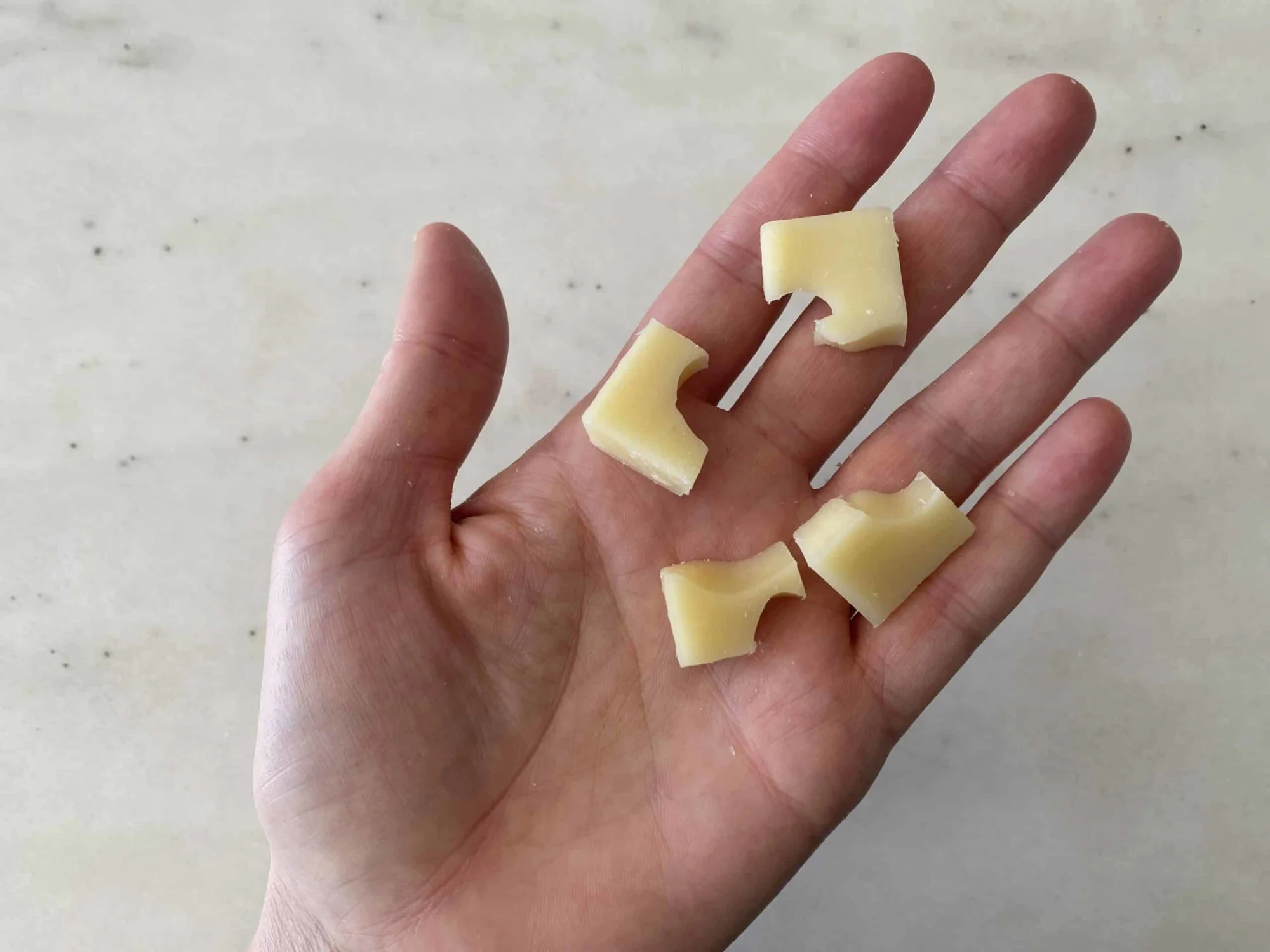
Want ideas for packed lunches? See 75 Lunches for Babies & Toddlers
Written by
Expert Tips Delivered to Your Inbox
Sign up for weekly tips, recipes and more!
The content offered on SolidStarts.com is for informational purposes only. Solidstarts is not engaged in rendering professional advice, whether medical or otherwise, to individual users or their children or families. No content on this site, regardless of date, should ever be used as a substitute for direct medical advice from your doctor or your medical or health professional, nutritionist, or expert in pediatric feeding and eating. By accessing the content on SolidStarts.com, you acknowledge and agree that you are accepting the responsibility for your child’s health and well-being. In return for providing you with an array of content “baby-led weaning” information, you waive any claims that you or your child may have as a result of utilizing the content on SolidStarts.com.

